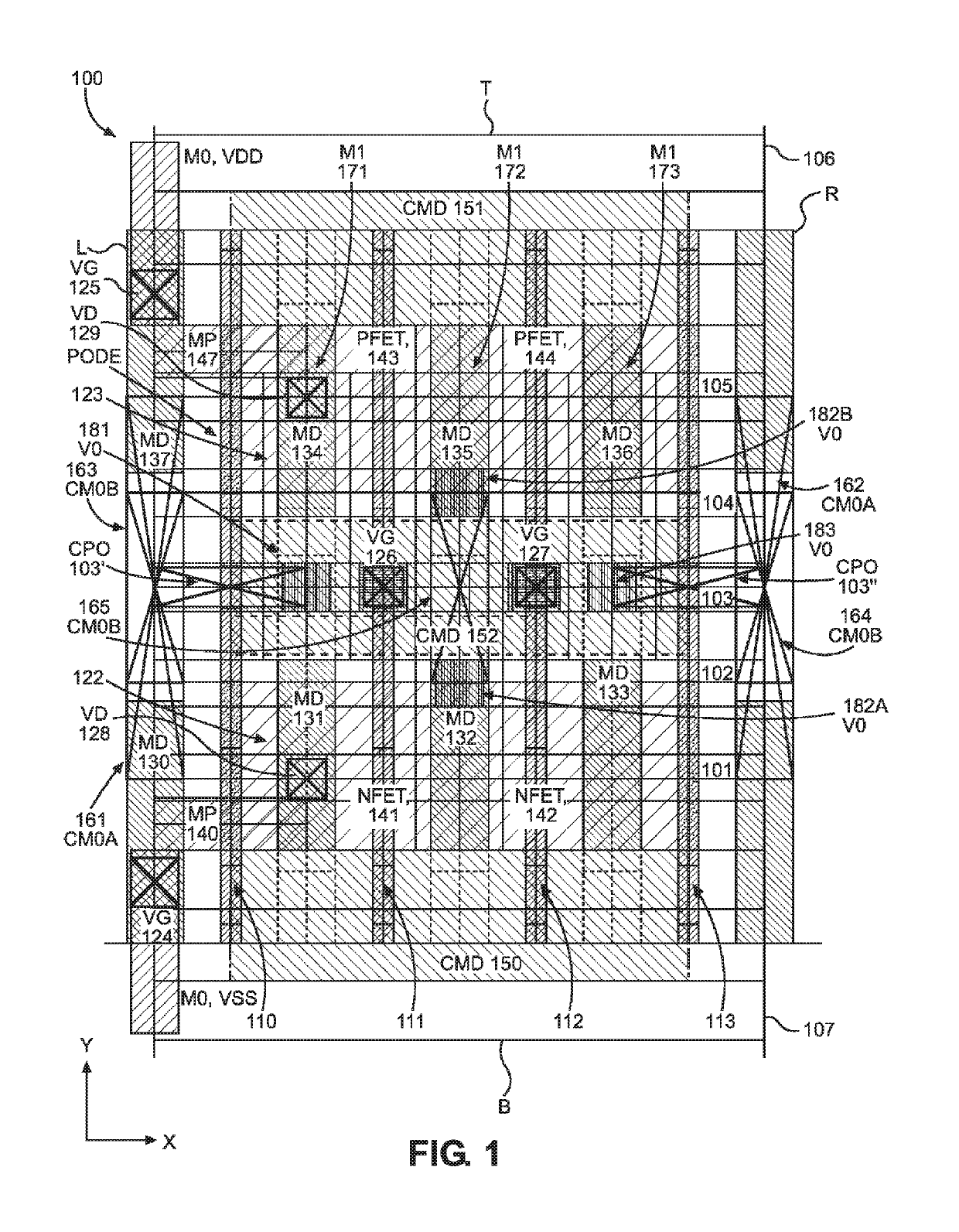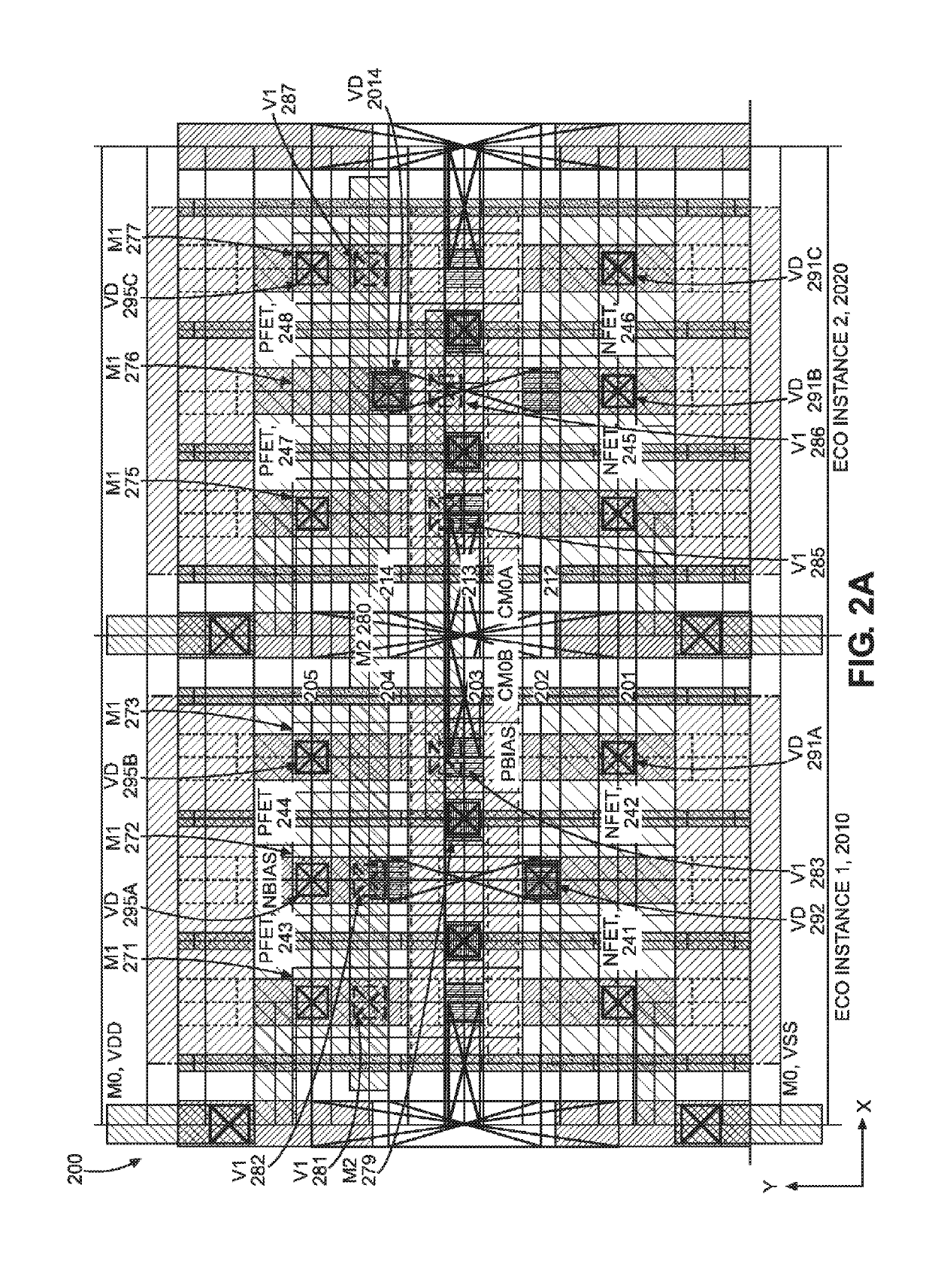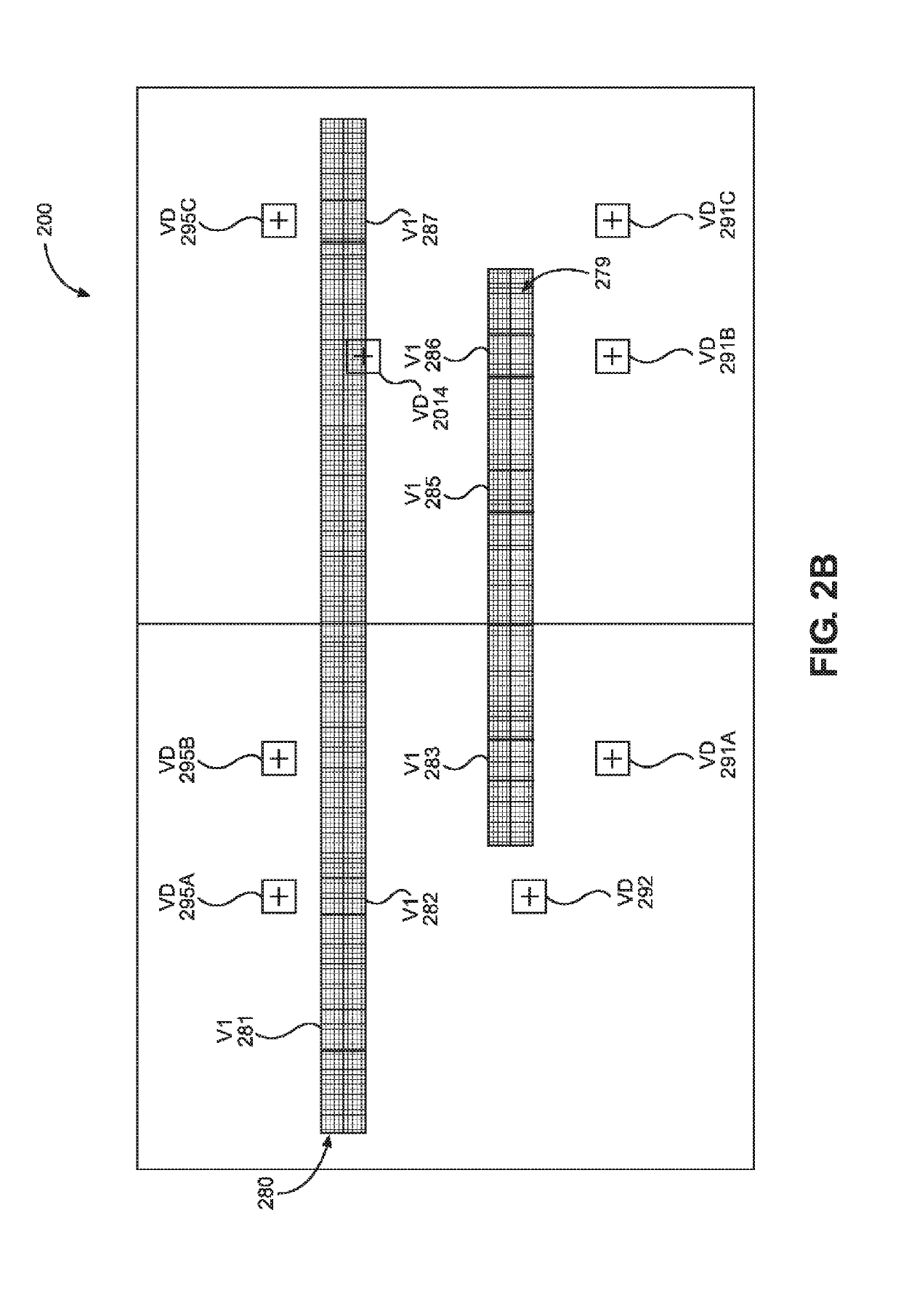Integrated circuit (IC) design methods using engineering change order (ECO) cell architectures
a technology of integrated circuits and cell structures, applied in the field of improving integrated circuit (ic) designs, can solve the problems of increasing the number of masks required in the manufacturing process, complex multi-mask processes, and high cost of multi-mask processes, and achieves the effect of minimal disruption to the original mask sequence and greater flexibility in eco changes
- Summary
- Abstract
- Description
- Claims
- Application Information
AI Technical Summary
Benefits of technology
Problems solved by technology
Method used
Image
Examples
Embodiment Construction
[0035]With reference now to the drawing figures, several exemplary aspects of the present disclosure are described. The word “exemplary” is used herein to mean “serving as an example, instance, or illustration.” Any aspect described herein as “exemplary” is not necessarily to be construed as preferred or advantageous over other aspects.
[0036]Aspects disclosed in the detailed description include integrated circuit (IC) design methods using engineering change order (ECO) cell architectures. In particular, exemplary aspects provide a fill process that is both single- and multi-row aware, considers a poly-pitch count, and utilizes metallization of the “empty space” relative to a suite of available fill cells. The process is also aware of timing critical logic elements and may place ECO fill cells in near proximity to such timing sensitive circuits or other margin critical circuits to allow for decoupling or, if there is a logic error, an ECO cell is placed such that the ECO cell is well...
PUM
 Login to View More
Login to View More Abstract
Description
Claims
Application Information
 Login to View More
Login to View More - R&D
- Intellectual Property
- Life Sciences
- Materials
- Tech Scout
- Unparalleled Data Quality
- Higher Quality Content
- 60% Fewer Hallucinations
Browse by: Latest US Patents, China's latest patents, Technical Efficacy Thesaurus, Application Domain, Technology Topic, Popular Technical Reports.
© 2025 PatSnap. All rights reserved.Legal|Privacy policy|Modern Slavery Act Transparency Statement|Sitemap|About US| Contact US: help@patsnap.com



